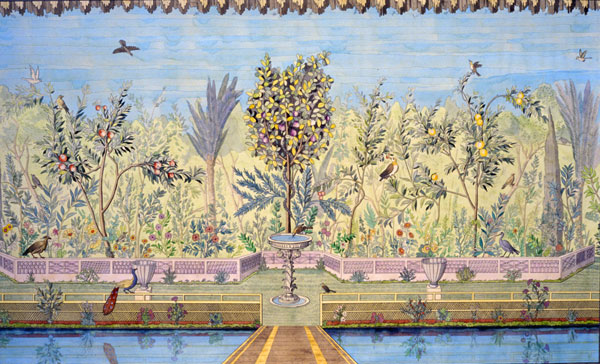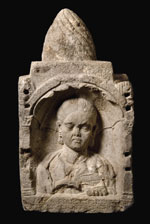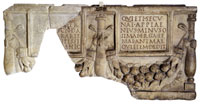The exhibition is produced in partnership with the Institute national de recherches archéologiques preventives (Inrap), and the Ministry of Culture and Communication / Department of the Museums of France defines it as being of national interest and as such the State has granted it exceptional financial support. The organizers’ objective is to present the funerary rites in Lugdunum and more widely in Roman Gaule, and to share with the public the recent progress made in funerary archaeology through various preventive excavations carried out in the territory of Lugdunum.
A long tradition of research
The exhibition follows a long tradition of ancient research in Lyon: when the collections first saw the light in the XIXth century, funerary inscriptions played an important role in learning about the ancient history. When the museum was created in 1975, the funerary theme was again mainly looked at through epigraphs. The epitaphs shed a sociological light on the various themes presented: domestic life, crafts, trade… Consequently, the evolution of the funerary rites (passage from incineration to inhumation) and the nature of the objects associated to the deceased started to be looked at with interest.
Illustration: Funerary monument of Primilla. Gallo-Roman museum in Lyon-Fourvière.
Christian THIOC and Jean-Michel DEGUEULE.
The exceptional results of preventive archaeology
Since then various necropolises have been explored all over the territory of Lyon: on the hill of Fourvière, in the plain of the Vaise, on the left bank of the Rhône river, essentially as preventive excavations ordered by the State and carried out by the archaeologists from the National Institute for preventive archaeological excavations (Inrap). The implementation of specific excavation methods, the systematic application of the anthropologic analyses on the field and no longer only in the laboratory and the meticulous attention given to the treatment of the objects found in the tombs now authorise an ethnographic approach of funerary practices. The results, put in perspective with the texts, render not only the complexity of the rites that are proper to the Roman religion, but also lead to questions of sociological and cultural order. The subject concerns the foundations of society itself, and is undoubtedly one of the most important contributions archaeology has made to help us understand the Gallo-Roman world.
Various reconstitutions
In the continuity of the exhibition Par Toutatis, la religion des Gaulois, this show gives a large place to reconstitutions. The aim is to recreate the funerary rites at the Roman time since the decease until the burial and the other ceremonies. An evocation of the funerary wake, then of the funeral procession leads the visitor to the heart of the exhibition, with the recreation of the space of a necropolis at the end of the 1st century A.D. The organizers also conjure up the practices of incineration, of interment, funerary banquets, memory rites, the nature and the function of the objects deposited with the deceased, the place of the burial site in the urban landscape, the relations between the living and the dead … The exhibition wishes to de-dramatise the notions linked mainly to Christianity by recalling that in the Roman Antiquity, death was considered as the epilogue to life and was in no way tragic. It shows the way in which the tombs reflect the social hierarchy, from the greatest mausoleums to the tombs consisting of a simple amphora. A second part deals with the rediscovery of monuments and objects in the modern times as well as the archaeology methods, in particular the analysis of animal and vegetable remains.
Illustration: Cinerary coffer. Gallo-Roman museum, Lyon-Fourvière.
Christian THIOC and Jean –Michel DEGUEULE.
PUBLICATIONS:
• Funerary Rites in Lugdunum, collective work, Errance publishing house, 23 x 28cm, 250 p., 2009, 32 €, ISBN : 978-2-87772-406-7
• Themed volume of Gallia 66-1, Funeral practices and spaces in Gaul during the Antiquity, collective work directed by Frédérique Blaizot (Inrap), CNRS publishing house, 387 p., 2009, 55 €, ISBN : 978-2-271-06894-1
• 43 page booklet made available to the visitors free of cost
To see more illustrations, click on VERSION FRANCAISE at the top of this page
| 









